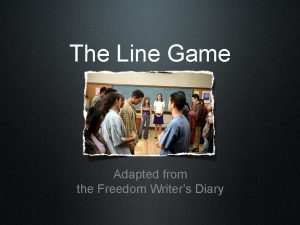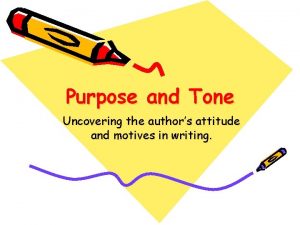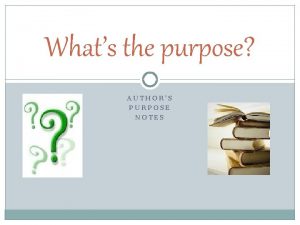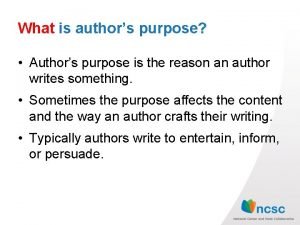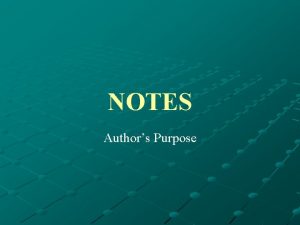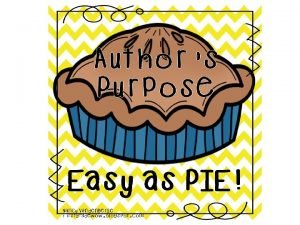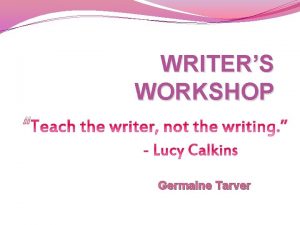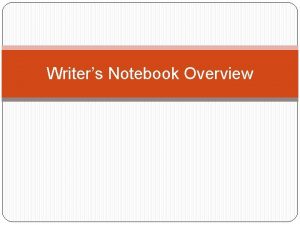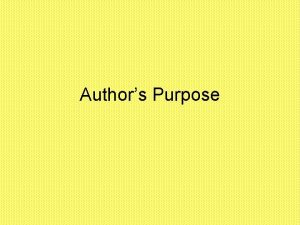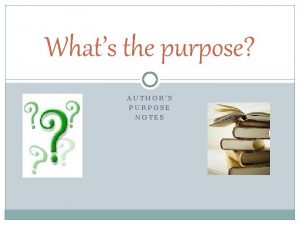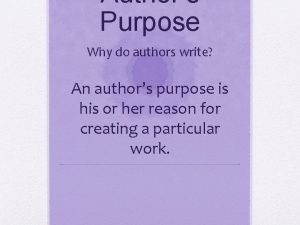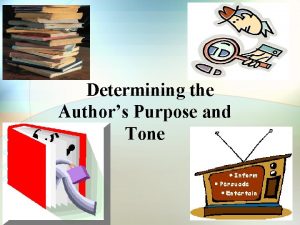Authors Purpose and Perspective Authors purpose a writers









- Slides: 9

Author’s Purpose and Perspective

• Author’s purpose: a writer’s reason for crafting a particular work ▫ ▫ To entertain To persuade To inform To express thoughts or feelings

• Author’s perspective: the unique combination of ideas, values, and beliefs that influences the way a writer looks at a topic. ▫ Usually revealed subtly ▫ Involves author’s background and cultural/historical influences

Types of Literary Devices: • Diction: writer's choice of words ▫ Conveys mood, attitude, dialect and style of writing. �Denotation: Dictionary definition of a word �Connotation: feelings and ideas the word conveys Example: Terms such as ‘thy’ and ‘thee’ create a Shakespearean mood.

Types of Literary Devices: • Imagery: author uses descriptive words and phrases to create “mental images” for the reader. ▫ Helps the reader to visualize more realistically the author’s writing. ▫ Also refers to use of detail Example: The gushing brook stole its way down the lush green mountains, dotted with tiny, colorful flowers.

Types of Literary Devices: • Syntax: the order in which words and sentences are placed together in a piece of writing. Example: The sentence "The man drives the car" would follow normal syntax in the English language. Changing the syntax to "The car drives the man” changes the sentence’s meaning.

These devices contribute to: • Tone – author’s attitude toward a subject

In addition, as you read, be sure to consider… • Which details the author chooses to include • Selection of facts • Focus or emphasis

Lesson Activating Strategy: • Discuss with the people at your table: What are some of the things that annoy you the most when they break down, don’t work, or get lost? Name at least five items and explain why they annoy you the most.


